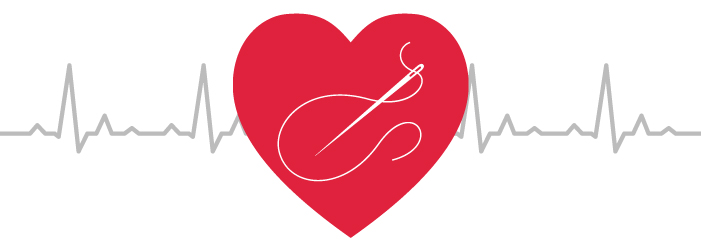
With all the time you spend sewing and quilting, I bet you’ve wondered if there were other benefits to the activities besides the beautiful end results. Are there health benefits to spending so much time absorbed in a project? The answer to that question is a definite yes! I’ll guide you through two top benefits: mental and physical boosts to your health. I’ll cover how these benefits work together to make you feel happier and healthier as you’re working on your sewing and quilting projects. Plus, I’ll include some bonus benefits that’ll be sure to encourage you even more in your crafting endeavors!
Mental Health Benefits
One huge element of fiber arts is creative expression, which is deeply beneficial to your mental health! Sewing and quilting grant you wonderful opportunities to express yourself in what you’re creating, regardless of whether you’re following a pattern or not. As you’re given room to flex your creative muscles, you’re able to relax and give yourself over to the task at hand. In a society that values overachievement, taking the time to work for yourself and create something that reflects your own personal style is a balm in the midst of chaos.
If you suffer from anxiety and/or depression, you may feel your symptoms ease with sewing or quilting. A study analyzed in the CNN article, “This is Your Brain on Crafting” by Jacque Wilson, reports that tactile hobbies release dopamine, which is the pleasure chemical of your brain. This is released not only in the making of a project but in the end results, as you’ve followed through and created something brand new.
Crafting allows you to achieve a very similar mental state to the one you achieve when meditating. This state is known as “flow”, which is discussed in the aforementioned CNN article. You may recognize this as the moment when you are sewing or quilting and you no longer feel the passage of time. You become so absorbed in the task that you don’t recognize that there is anything in the world beside that moment. The awareness of your physical and mental state is lost in the work of your hands. It doesn’t matter if the activity is super difficult or challenging; you’ll still achieve that “flow” state when you are in the deep end of these crafting moments.
The major emotional benefit of having a tactile hobby like sewing or quilting comes with communal connections that are formed as a result. There are many online communities for sewists and quilters. It’s super easy to bond with others over a shared love of these activities, which is important for combating loneliness. According to the CDC, loneliness can increase your risk for premature death. It’s so important to make connections with others to combat this, and these activities give you a chance to do just that.
Physical Health Benefits
Alongside all of these important mental health benefits, there are very real physical health benefits to crafting. This may seem surprising since you primarily sit in one spot and stay there for a while to work on a project, but it’s actually quite a boon to your health!
According to South Denver’s Cardiology Associates, hobbies and crafting lower the stress hormone cortisol, which helps protect your heart against disease. Your blood pressure is also lowered, which helps to protect your heart as well!
Another positive physical health benefit is how your brain reacts! We’ve already covered the mental health benefits, but the physical structure of your brain is also aided by crafting. According to Women’s Health in the article “Is It Time You Got a Hobby?” by Claudia Canavan, neuroplasticity is developed even further. To put it simply, your brain creates new pathways for information to travel. This helps prevent diseases like dementia and Alzheimer’s down the road. Your brain stays active and flexible as you complete new projects.
Bonus Benefits of Sewing and Quilting
If the mental and physical benefits of sewing and quilting were not enough to encourage your further crafting, there are two other benefits I’d like to share with you: sustainability and permanence.
On the topic of sustainability, you’re contributing to a healthier environment by not contributing to the stream of waste that ends up in landfills due to fast fashion. According to the article “Where Does Discarded Clothing Go?” by Elizabeth Cline in The Atlantic, ten million tons of textile waste ends up in landfills every year as a result of people throwing away damaged clothing. When you know how to sew, you can mend and alter clothes to prevent them from being thrown out. You’re helping the environment in a real way! You’re an environmental helper without even thinking about it.
Another benefit of sewing and quilting can be summed up in one word: permanence. When you have skills in sewing and quilting, you’re putting time into a project that will last so much longer than the quilts or clothing you’d find in stores. You’re creating works of art that will outlive the current trend of fast fashion. Quilts made with love and devotion can be passed down in families for generations, and they’re a beautiful reminder of the care and dedication of the hobby. Mending a pair of jeans may not seem glamorous, but you’re giving those jeans a new life!
It can be intimidating to start hobbies like sewing and quilting, but the benefits outweigh any beginner nerves! Not only will you lower your risk of anxiety, depression, heart disease, and more, but you’re contributing to a healthier environment. If you already love to sew or to quilt, you may already feel the joy of these in your own life. Taking the time to contribute to these projects is such a great way to feel better about life, so keep on crafting!
